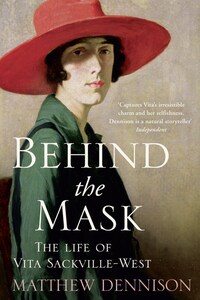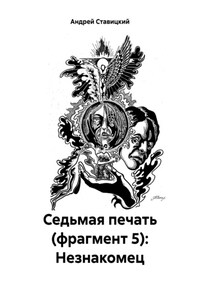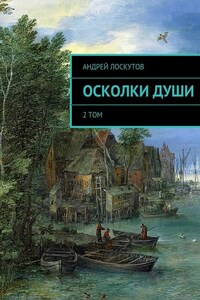William Collins
An imprint of HarperCollinsPublishers
1 London Bridge Street
London SE1 9GF
WilliamCollinsBooks.com
This eBook first published in Great Britain by William Collins in 2014
Copyright © Matthew Dennison 2014
Matthew Dennison asserts the moral right to be identified as the author of this work.
A catalogue record for this book is available from the British Library.
Front cover shows Lady with a Red Hat (oil on canvas), Strang, William (1859–1921) / Art Gallery and Museum, Kelvingrove, Glasgow, Scotland © Culture and Sport Glasgow (Museums) / Bridgeman Images; Shutterstock.com (roses)
All rights reserved under International and Pan-American Copyright Conventions. By payment of the required fees, you have been granted the non-exclusive, non-transferable right to access and read the text of this e-book on-screen. No part of this text may be reproduced, transmitted, down-loaded, decompiled, reverse engineered, or stored in or introduced into any information storage and retrieval system, in any form or by any means, whether electronic or mechanical, now known or hereinafter invented, without the express written permission of HarperCollins.
Source ISBN: 9780007486960
Ebook Edition © October 2014 ISBN: 9780007486977
Version: 2015-05-20
For Gráinne, with all love
‘… he told her that he could find no words to praise her; yet instantly bethought him how she was like the spring and green grass and rushing waters.’
(Orlando, Virginia Woolf)
‘All the coherence of her life belonged to Condaford; she had a passion for the place … After all she had been born there … Every Condaford beast, bird and tree, even the flowers she was plucking, were a part of her, just as were the simple folk around her in their thatched cottages, and the Early-English church, where she attended without belief to speak of, and the grey Condaford dawns which she seldom saw, the moonlit, owl-haunted nights, the long sunlight over the stubble, and the scents and sounds and feel of the air.’
John Galsworthy, Maid in Waiting (1931)
‘… we write, not with the fingers, but with the whole person. The nerve which controls the pen winds itself about every fibre of our being, threads the heart, pierces the liver.’
Virginia Woolf, Orlando (1928)
1. Vita by Philip Alexius de László, oil on canvas, 1910 (© National Trust Images/John Hammond)
2. Vita with her mother; Vita with her father
3. Knole; King’s Bedroom, Knole (© English Heritage)
4. Harold, Vita, Rosamund Grosvenor and Lionel Sackville on their way to court; Vita and her parents (Photo by Hulton Archive/Getty Images)
5. Vita as Portia by Clare Atwood, oil on canvas, 1910 (© National Trust Images)
6. Vita and Mrs Walter Rubens (© Illustrated London News Ltd/Mary Evans); Vita (© Illustrated London News Ltd/Mary Evans)
7. Sir Harold Nicholson, c.1920 (© Private Collection/Bridgeman Images); Vita at Ascot with Lord Lascelles (Photo by Hulton Archive/Getty Images)
8. Violet Keppel by Sir John Lavery, oil on canvas, 1919 (© National Trust Images)
9. Vita and her two sons (Photo by Hulton Archive/Getty Images)
10. View of Long Barn, Kent, in Winter by Mary Margaret Garman Campbell, oil on paper, c.1927–8 (© National Trust/Charles Thomas)
11. Vita at the BBC (© BBC/Corbis); Vita in sitting room at Long Barn with her sons (© Hulton-Deutsch Collection/CORBIS)
12. Vita (© Mary Evans/Everett Collection)
13. Dorothy Wellesley by Madame Yevonde (© The Yevonde Portrait Archive); Virginia Woolf (Photo by Mondadori Portfolio via Getty Images); Hilda Matheson by Howard Coster (© National Portrait Gallery, London)
14. Sissinghurst Tower (© Niek Goossen/Shutterstock); White Garden at Sissinghurst (© Eric Crichton/CORBIS)
15. Vita by John Gay, 1948 (© National Portrait Gallery, London); Vita in the Sissinghurst Tower by John Hedgecoe, 1958 (© 2006 John Hedgecoe/Topham/The Image Works)
16. Vita’s desk by Edwin Smith, 1962 (© Edwin Smith/RIBA Library Photographs Collection)
VITA SACKVILLE-WEST ONCE described herself as someone who loved ‘books and flowers and poetry and travel and trees and dragons and the wind and the sea and generous hearts and spacious ideals and little children’.>1 Later she added that she loved ‘literature, and peace, and a secluded life’.>2
There is no reason to doubt her. ‘Books and flowers and poetry’ became the outward purpose of her life: at the time of her death she was famous twice over, as a writer and a gardener. She never lost the taste for travel that began during her enormously privileged childhood; at home, she balanced curiosity and wanderlust with a powerful need for solitude (‘peace, and a secluded life’). Her love of nature – ‘trees and … the wind and the sea’ – is among her defining attributes as a poet and a novelist. It also shaped her understanding of the role of the landowning aristocracy to which she belonged, and in particular of her own role as a dispossessed aristocrat in the twentieth century. I interpret those ‘dragons’ symbolically. Vita was an extravagant dreamer. Her self-perception was shaped by myths and fairy tales. Intensely imaginative, like many artists she realised early in her life the subjectivity both of reality and realism. She valued intensity of feeling. She once described the ideal approach to life as ‘the ardour that [lights] the whole,/ Not expectation of that or this’.














